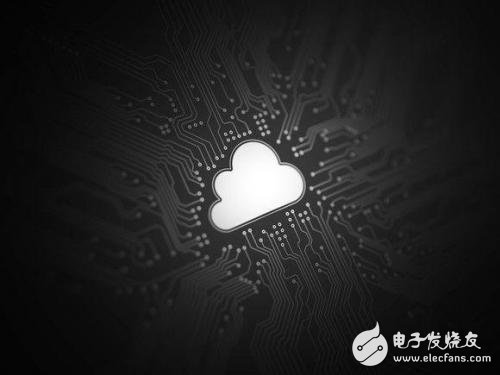After years of development, the cloud technology that the public sees is still rolling in the cloud disk. Although everyone is looking forward to the future of the cloud, few people can accurately describe what the future of the cloud can bring us. The basic characteristics of the cloud are everywhere. Any boundary and vacuum represent the unfulfilled development of the cloud. When we can one day handle all the information without any hindrance, regardless of time, place, platform, country, manufacturer... ...the world of clouds is really coming, and the journey is still long. As early as 2010 and 2011, the prediction of the glorious future of cloud computing became the headline news. Analysts predict that the arrival of cloud computing is the best technological development since the invention of the computer. Everyone has their own opinions about market trends. In the past few years, cloud computing has indeed become a force that cannot be ignored. For many businesses, cloud computing is now the default for deploying new applications and services. The development of cloud computing: not exactly the same as people expected The following are seven predictions made by analysts about the development of cloud computing technology six or seven years ago. Some of them have already produced results - at least partially - and others are completely wrong. In 2010 and 2011, all major market research companies predicted that cloud computing spending will grow rapidly. For example, in 2012, Forrester predicted that total public cloud computing spending would reach $159.3 billion by 2020. But this prediction is awful—not because analysts overestimate the growth of cloud computing, but because they underestimate it. Since the 2012 report, Forrester has revised its forecast for cloud computing technology several times. Recently, Forrester released its forecast in September 2016 that public cloud computing service revenue will reach $236 billion by 2020 due to “faster-than-expected growthâ€. The number predicted by Gartner is higher. According to Gartner's October 2017 report, the market value of public cloud computing services in 2016 was $219.6 billion, and in 2017 it could exceed $260.2 billion. Regardless of which number you believe, the growth in public cloud computing revenues clearly exceeds expectations. This situation has led to a lot of different opinions. Five or six years ago, some "experts" predicted that companies in the non-IT industry would start offering cloud computing services and might even become major players in the field. DatamaTIon published an article titled "Where do you buy cloud computing services?" In theory, Best Buy Group and other large retailers will provide services in the cloud. Unfortunately, they are wrong. Amazon and large technology companies dominate the market for cloud computing technology. A report released by SynergyResearch in October 2017 shows that Amazon Web Services (AWS) has more than one-third of public IaaS, PaaS services and hosted private cloud computing markets, while Microsoft, IBM, Google and Alibaba follow it. Rear. In the early days of cloud computing, many analysts thought that companies would prefer to use private clouds, and they would be concerned about the information security of public clouds. DatamaTIon released a report titled "Three Myths about Cloud Computing Technology," which states: "Private cloud computing services will be more popular than public cloud computing - an average of more than a quarter of IT resources will be based. Implemented by some kind of private cloud computing service." Enterprises do invest heavily in private cloud computing, but private cloud computing investments have slowed recently, and public cloud investments are growing rapidly. RightScale's cloud computing status report, released in 2017, found that 41% of all organizations surveyed were running on the public cloud and 38% of the workloads were running on private clouds. But these numbers differ only when companies are considered separately: 32% of the workload is in the public cloud and 43% in the private cloud. The possible answer to this phenomenon is that for some users, private clouds were once popular, but in the long run, public clouds became more important. Ultimately, as more organizations tend to use hybrid clouds and cloudy, these debates about public and private clouds may become meaningless. Another common saying in the early days of cloud computing technology is that new cloud computing service models can lead people to stop buying computers. DatamaTIon's article on five cloud computing predictions in 2011 said: "The rise of cloud computing and smartphones threatens computers." It also quotes MaryMeeker's prediction that mobile Internet traffic will exceed the computer's Internet traffic. Data for 2017 shows that mobile Internet traffic now accounts for 53% of total Internet traffic, which means MaryMeeker is right. In addition, sales of personal computers have also declined. According to Gartner, PC shipments reached 85.2 million units in the second quarter of 2011, compared with 61.10 million PCs sold in the second quarter of this year. He added: "The PC industry is in a five-year downturn, which is the 11th consecutive quarter of decline in shipments, and shipments in the second quarter of this year are the lowest quarter since 2007." Despite this, these shipments are still higher than some analysts expected in 2011. Therefore, although the development of cloud computing technology may lead to a decline in PC sales, people have not stopped buying personal computers. In 2011, many analysts believe that the development of cloud computing technology will encourage people to buy tablets and thin clients instead of personal computers. According to Jeff McNaught, Wyse's chief marketing and strategy officer, quoted in the DatamaTIon article, "Today, 90% of individuals access their computing infrastructure via computers, and only 10% use cloud computing services and others. In less than 10 years In time, I expect this ratio to be reversed." Tablet PCs, especially the iPad, have seen an initial surge in sales, but their purchases have been declining in recent years. IDC Analysis's second quarter 2017 global quarterly tablet tracking report showed that tablet shipments fell 3.4% year-on-year. The analyst firm believes that the market is in a “slipping†state. The thin client did not really take off. As PCs become more affordable, the price advantages of thin clients are quite slim, making them less attractive. It's worth mentioning that some companies, especially those using Google's cloud computing services, are buying Chromebooks for their employees. A 2010 Datamation article examines seven innovation hotspots in cloud computing technology, mentioning a new term: skycomputing. The article explains that Sky Computing connects multiple clouds together, a model that takes resources from multiple cloud service providers and brings them together to create a large-scale distributed infrastructure. Google's search for "sky computing" shows that although this was a popular view from academia between 2009 and 2010, the term "sky computing" has never really caught on. On the other hand, this prediction is not completely wrong. Cloudy and hybrid cloud environments are becoming the norm. However, this is not exactly the same as the sky calculations envisioned by computer science researchers. In 2010, Datamation's article on 10 subversive cloud computing trends made accurate predictions that open source is increasingly important in cloud services. It expects the company to move to open source cloud computing solutions to protect itself from vendor concerns and mentions that OpenStack is an important emerging open source cloud computing initiative. This is real. Open source technologies such as Linux and open source databases are an important part of all major cloud computing services. The OpenStack program has experienced rapid growth and is now supported by more than 672 companies. In addition, some surveys show that as many as 82% of companies are already using OpenStack, or plan to do so in the future. Currently, the analyst firm predicts continued strong growth in the public cloud computing market. SidNag, director of research at Gartner, said that by 2020, the total public cloud computing market could reach $411.4 billion. “As of 2016, approximately 17% of total revenue from infrastructure, middleware, applications and business process services markets has shifted to cloud computing. By 2021, this ratio will rise to approximately 28%. Hybridcloud will gradually dominate in the future. In the future, pure cloud-based service platform will be like a company with a full range of strategies. Anyone can store their data in the cloud. When you need to use it, just use any networked terminal device to access these services. Obviously, the future of cloud computing is full of fierce competition. In fact, the term “cloud†is appropriate because technology is constantly evolving, just as clouds in the sky are generally variable and indefinite. For enterprises, grasping the wind direction of cloud computing technology is for commercial needs, because cloud computing technology means competitiveness. A study published earlier this year by IDG Research Services found that nearly 40% of companies with public cloud computing services have transferred some of their data storage back to the on-prem computing cloud, primarily due to security and cost. Consideration. This trend, which has emerged this year, is a cautious approach. Companies are realizing that although the cloud is heavily computationally intensive, they are all more cautious about the data they have on the cloud. A cloud computing-based corporate strategy has recently become more apparent. HypsRamp, a hybrid cloud IT operations management provider, surveyed IT leaders of large companies (more than 500 employees) and found that public cloud services are taking up more IT budget share. More than half of the respondents said they have used public cloud services for more than three years, but only 29% of respondents said their cloud utilization level is “matureâ€, while “waiting for progress†is 50%, and “newbie†is 21%, so there is still a lot of room for growth in the application of cloud technology. The survey found that three-quarters of respondents said they want to work with different cloud service providers to meet their business needs. Therefore, with the development of public, private and hybrid clouds, a new term has emerged: multi-cloud. Cloudiness is an emerging cloud computing usage model that refers to the use of more than one public cloud computing service. There are two types of cloudy: one is to mix two or three cloud types, such as a mix of public and private (this is a hybrid cloud), and the other is to use multiple cloud computing service providers. A company may work with Amazon, Microsoft, and another smaller vendor. Tim Crawford, chief consultant at Avao, a strategic consulting firm, says people need a variety of different services to implement many different mechanisms, so by default they choose a hybrid cloud or a cloudy approach. “It’s impossible to say that only one type is enough. The reality is that people have to use these cloudy combinations. This is not an individual phenomenon, I think this phenomenon can be seen in most companies,†he said. He has now observed the momentum of this development. Crawford said: "There is a lot of discussion, many people say that the future will be the world of public clouds, but I do not agree with this statement. Because in some scenarios, public cloud is not a viable solution for enterprises. †SteveTack, senior vice president of products for cloud computing application performance monitoring provider Dynatrace, said that they have reached a consensus with large enterprises and ISV customers that hybrid cloud will be the future direction. Tack said that most of the growth in demand for public cloud services is due to new investments and new initiatives, but he also sees more and more people moving applications that were originally stored in the data center to the cloud. . “With regard to these two growth methods, the former is used to establish a competitive advantage, while the latter is to save costs,†he said. But moving to the cloud may not be a good idea. Several studies have found that many companies move applications back to the cloud and quickly move back to the data center. Crawford said that this is not because public cloud computing services are more expensive, but because they have not been able to take full advantage of this cloud computing service. “This way of using cloud services can be four times more expensive than using traditional data centers. Because many traditional applications are designed to run at 24 hours a day, 24 hours a day, during peak hours (if The program has not been rewritten.) Public cloud services are not designed for this purpose. If they can use cloud services properly according to the original design purpose, it will be cheaper," he said. Why do companies make this mistake? Because they don't know much about cloud computing technology. "There are too many statements about this. How do you determine which ones are true and which ones are fake? Many companies are ordering the latest news feeds," he said. Therefore, migrating data center applications to the cloud will not be a major trend in the future as they work differently. Crawford also believes that latency issues will also be one of the shortcomings of public clouds, and for industries like the Internet of Things and edge services, private clouds will be a better choice. Neither Task nor Crawford believe that cloud computing technology will develop a new situation in the future, because existing technologies are sufficient. Crawford said: "The reality is that most companies are using hybrid clouds. They may introduce new technologies in the data center, such as some form of SaaS used by public cloud computing. Task said that there has been a lot of discussion about public cloud computing "no server running" recently. In fact, this is a bit of a misnomer. It still needs a server to run. It is automatically closed after the development team has uploaded the application and executed the function. It solves one of the biggest problems in cloud computing: people forget to shut down virtual machines when they are done. Developers and other users may forget to turn off the virtual machine and keep it running, which will always be billed. So sometimes companies will be surprised when they see their cloud computing service bills. He added: "I still think there is still a lot of potential profit margin in the market, and it is worth mentioning that there is no server operation, which will have a great impact on the future industry structure." Sonder U Vape is so convenient, portable, and small volume, you just need to take them out of your pocket and take a puff, feel the cloud geekvape sonder u vape bar,geekvape sonder u vape pod,geekvape sonder u vape device,geekvape sonder u vape kit,geekvape sonder u vape mod Ningbo Autrends International Trade Co.,Ltd. , https://www.vapee-cigarettes.com



of smoke, and the fragrance of fruit surrounding you. It's so great.
We are the distributor of the GEEKVAPE brand, we sell GEEKVAPE Aegis Series Vape, GEEKVAPE Sonder U Vape, GEEKVAPE Z Series Vape, and so on.
We are also China's leading manufacturer and supplier of Disposable Vapes puff bars, disposable vape kit, e-cigarette, vape pens, and e-cigarette kit,
and we specialize in disposable vapes, e-cigarette vape pens, e-cigarette kits, etc.